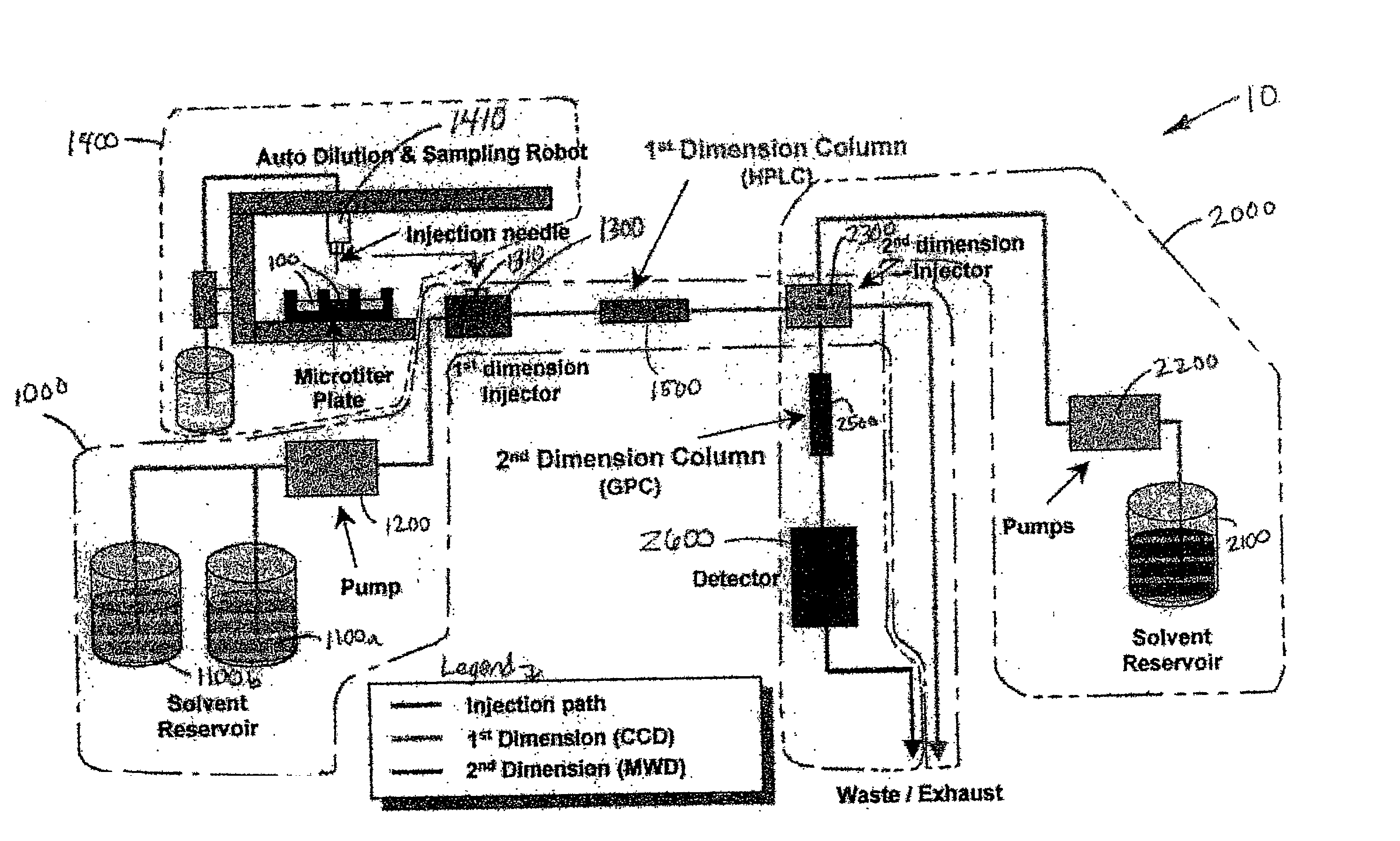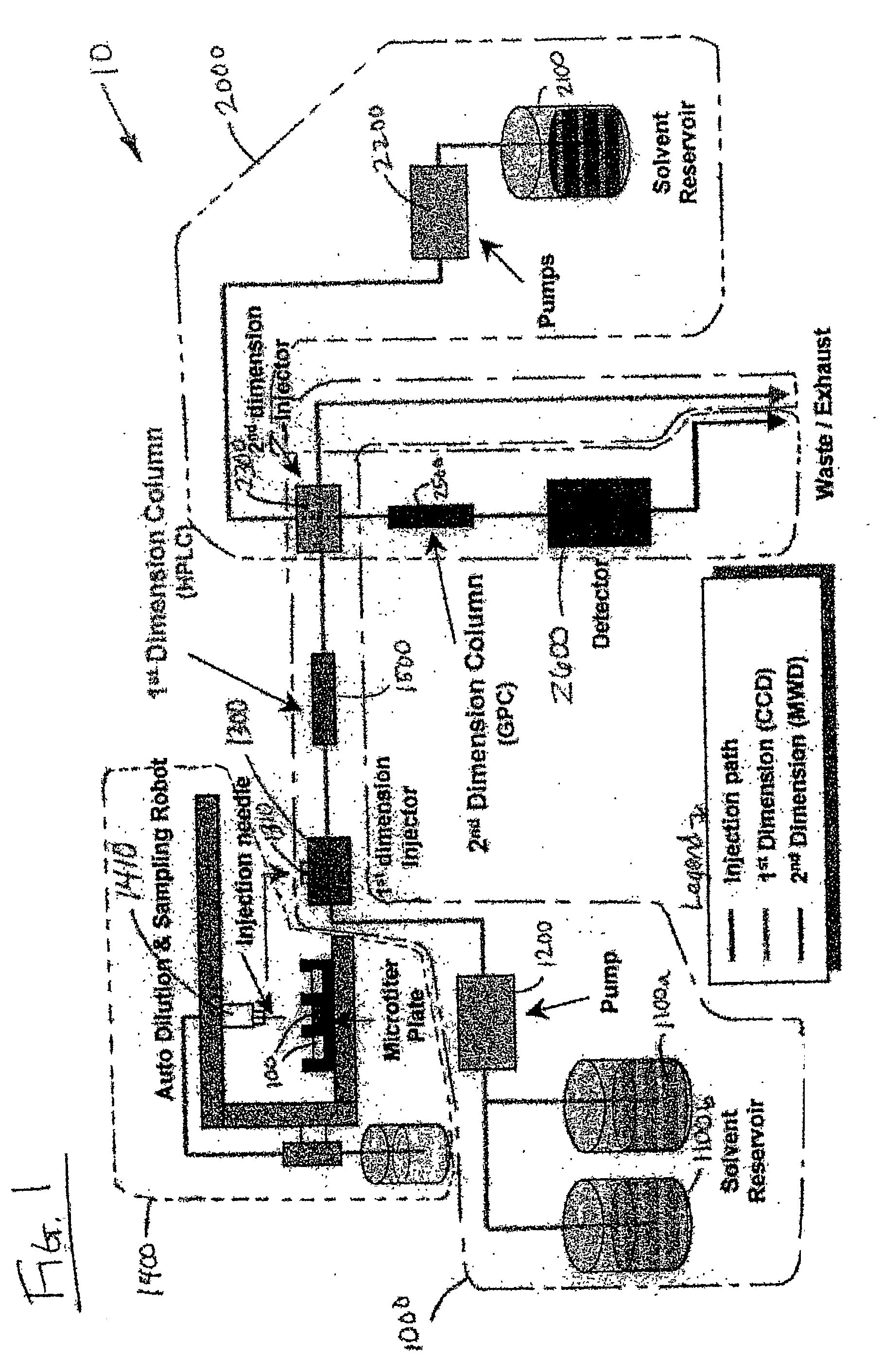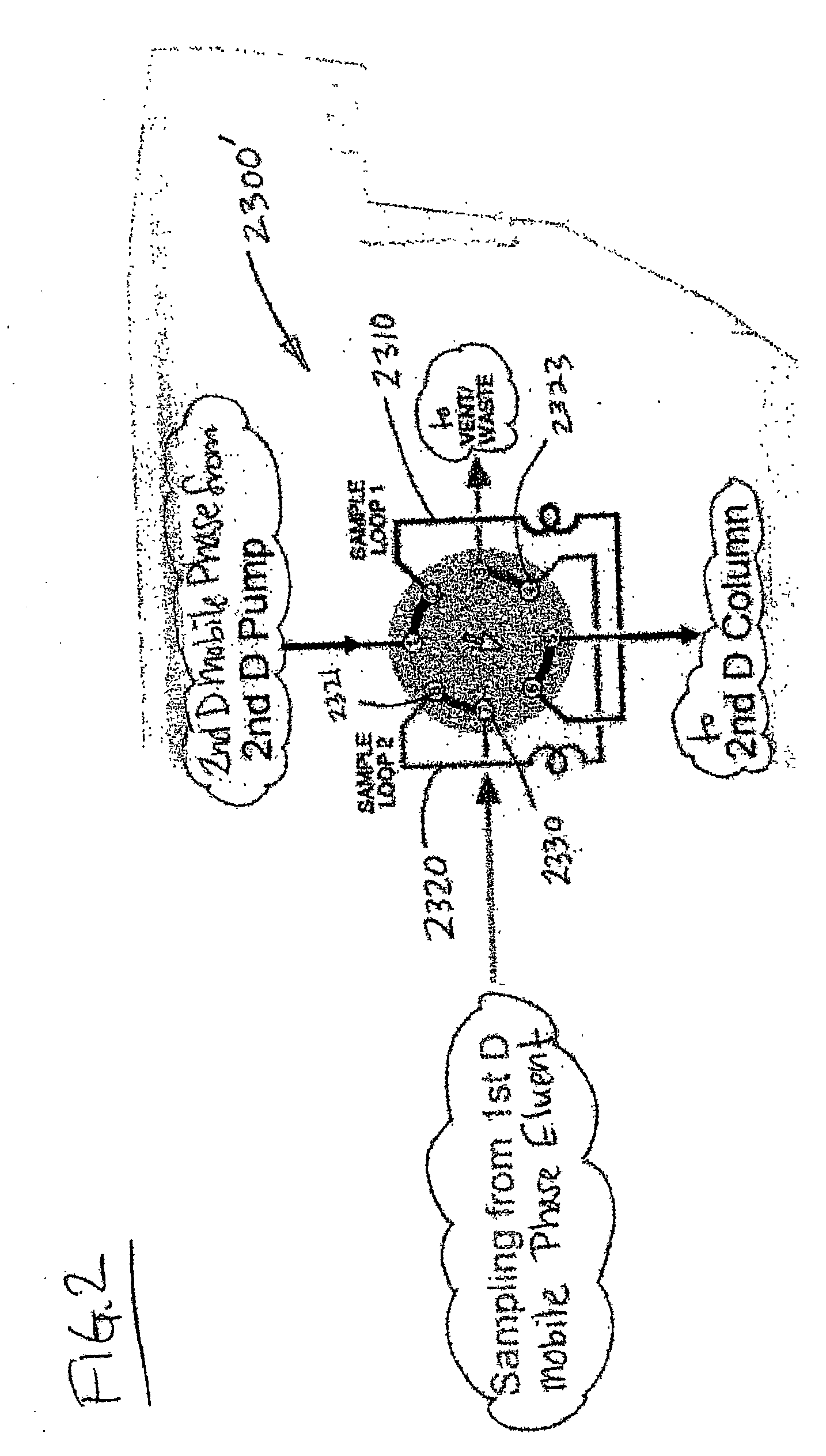Methods and apparatus for characterization of polymers using multi-dimensional liquid chromatography with regular second-dimension sampling
- Summary
- Abstract
- Description
- Claims
- Application Information
AI Technical Summary
Benefits of technology
Problems solved by technology
Method used
Image
Examples
example 1
[0096] Two-Dimensional Liquid Chromatography with Regularly Recurring 2.sup.nd-Dimension Sampling Interval
[0097] This example demonstrates two-dimensional liquid chromatography techniques for characterizing a polymer sample comprising polymer components of varying composition and / or molecular weight, wherein the second-dimension is comprehensively and directly coupled to the first dimension, by in-line sampling of the first-dimension mobile phase eluent at regularly recurring intervals of time.
[0098] In experiments effected for this example, various polymer samples (described below) having components with different chemical compositions and / or molecular weight were characterized in a two-dimension chromatography system comprising a first dimension HPLC subsystem adapted for normal-phase compositional gradient elution chromatography, and a second dimension HPLC subsystem adapted for gel permeation chromatography (GPC). Briefly, about 50 .mu.L of a polymer sample solution was injected...
example 2
[0102] Use of 2-Dimensional Liquid Chromatography for Fingerprinting Characterization of a Combinatorial Library of Polymer Samples
[0103] This example demonstrates two-dimensional liquid chromatography techniques as applied for characterizing a combinatorial library of polymer samples comprising polymer components of random copolymers, poly(AB), synthesized by free-radical polymerization in a parallel batch reactor with various ratios of monomers A and B, and with varying ratios of monomer to initiator. This example also demonstrates that such two-dimensional characterization protocols are comparable in quality of results to separate, one-dimensional analysis conducted independently of each other, and favorable in terms of overall sample throughput.
[0104] The polymer samples of the library were synthesized in the parallel batch reactor using combinatorial polymerization approaches known in the art. FIG. 7A is a graphical representation of the library design for the library of polyme...
example 3
[0106] Comparative Characterization Using 2-Dimensional Liquid Chromatography versus Using Separate, One-Dimension HPLC and GPC Analysis, for Fingerprinting Characterization of a Combinatorial Library of Polymer Samples
[0107] This example demonstrates a comparison between two-dimensional liquid chromatography techniques, and corresponding separate, individual one-dimensional liquid chromatography protocols, as applied for characterizing a combinatorial library of polymer samples. The library of polymer samples comprises polymer components of random copolymers, poly(AB), synthesized by free-radical polymerization in a parallel batch reactor with various ratios of monomers A and B, and with varying ratios of monomer to initiator, where A and B represent hydroxyethylmethacrylate (HEMA) and styrene monomers, respectively.
[0108] The polymer samples of the library were synthesized in the parallel batch reactor using combinatorial polymerization approaches known in the art. FIG. 8A is a gr...
PUM
| Property | Measurement | Unit |
|---|---|---|
| Time | aaaaa | aaaaa |
| Volume | aaaaa | aaaaa |
| Dimension | aaaaa | aaaaa |
Abstract
Description
Claims
Application Information
 Login to View More
Login to View More - R&D
- Intellectual Property
- Life Sciences
- Materials
- Tech Scout
- Unparalleled Data Quality
- Higher Quality Content
- 60% Fewer Hallucinations
Browse by: Latest US Patents, China's latest patents, Technical Efficacy Thesaurus, Application Domain, Technology Topic, Popular Technical Reports.
© 2025 PatSnap. All rights reserved.Legal|Privacy policy|Modern Slavery Act Transparency Statement|Sitemap|About US| Contact US: help@patsnap.com



